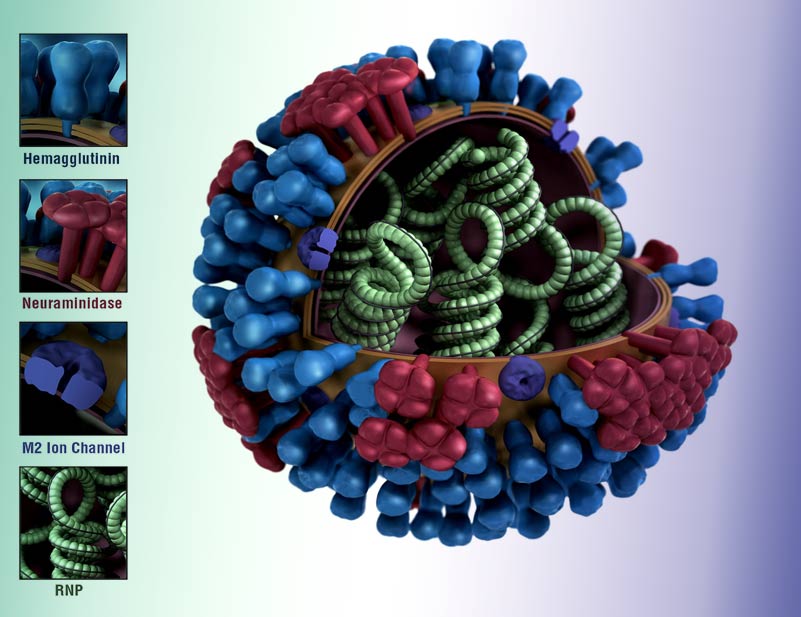There are 18 different hemagglutinin (H) subtypes and 11 different neuraminidase (N) subtypes of influenza A virus, as well as two lineages of influenza B virus. Annual influenza epidemics are often caused by H1 and H3 subtypes. In addition, H5, H7, H9 and H10 subtypes represent a global health concern. People do not have immunity to these subtypes, so they potentially can cause a pandemic with many human deaths and hospitalizations.

Medigen uses a unique, proprietary recombinant virus-like particle (VLP) technology. VLPs resemble viruses but they are non-infectious since they do not contain viral genetic materials and are considered safe vaccine. We prepared quadri-subtype VLPs that co-localized H5, H7, H9 and H10 subtypes within the VLP. Such VLPs were tested in collaboration with the CDC in an experimental ferret challenge model, currently the best animal model for influenza. Quadri-subtype vaccine induced serum antibody in ferrets to the H5, H7, H9 and H10 antigens and cross-reacted with other viruses within these subtypes. After challenge, all vaccinated ferrets showed significantly reduced titers of replicating influenza virus in the respiratory tract, indicating protective effect of vaccination with VLPs. This research is supported by the NIH NIAID.
Medigen also develops a universal flu vaccine that would provide protection against multiple subtypes of influenza including seasonal and pandemic influenza. Universal vaccine is designed to provide protection against many viruses including newly emerging strains.
Medigen publications:
Pushko P, Sun X, Tretyakova I, Hidajat R, Pulit-Penaloza JA, Belser JA, Maines TR, Tumpey TM. Mono- and quadri-subtype virus-like particles (VLPs) containing H10 subtype elicit protective immunity to H10 influenza in a ferret challenge model. Vaccine. 2016 Oct 17;34(44):5235-5242.
https://www.ncbi.nlm.nih.gov /pubmed /27663671
Tretyakova I, Hidajat R, Hamilton G, Horn N, Nickols B, Prather RO, Tumpey TM, Pushko P. Preparation of quadri-subtype influenza virus-like particles using bovine immunodeficiency virus gag protein. Virology. 2016 Jan;487:163-71.
